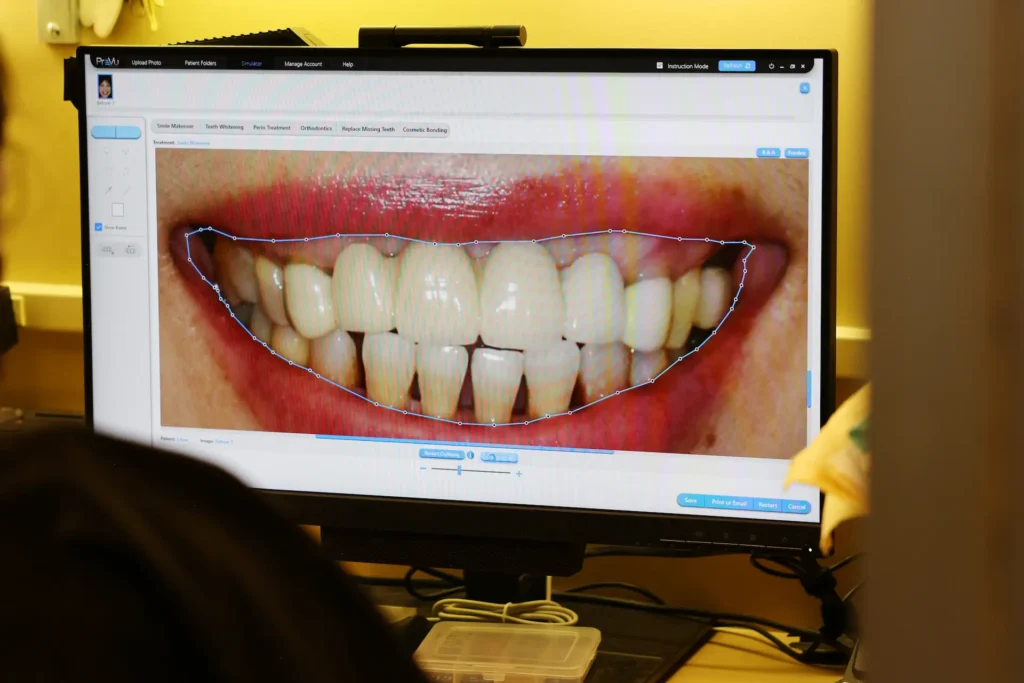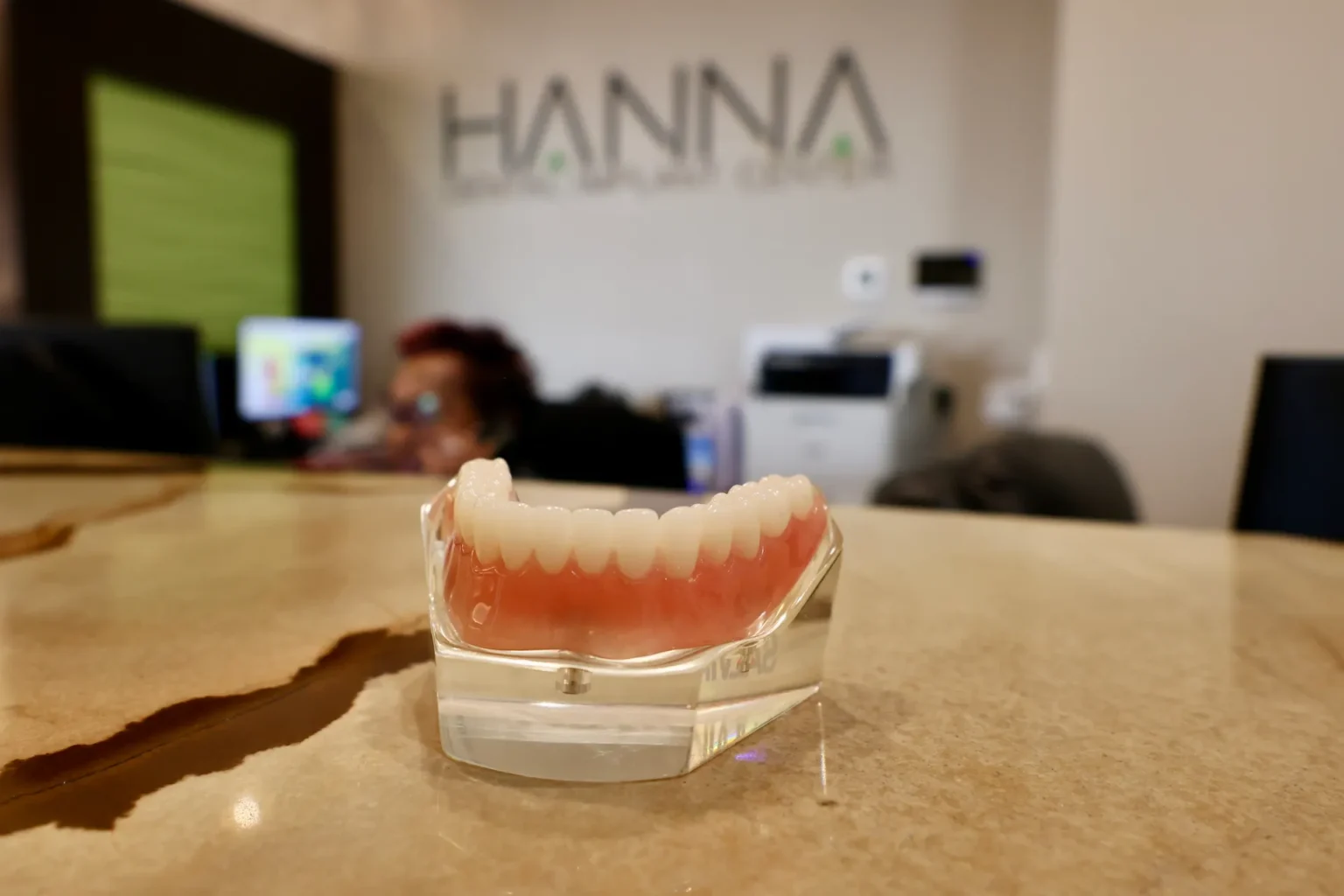Tooth decay is a common problem affecting people of all ages, leading to cavities and various oral health issues. It’s caused when plaque, a sticky film of bacteria, forms on teeth and interacts with the sugars in the food we eat. This interaction produces acids that can damage the tooth enamel, creating cavities.
Despite its prevalence, many are unaware of how it starts, its symptoms, or the effective treatments available.
Our goal is to shed light on tooth decay, offering insights into its causes, signs, and how to manage or prevent it. With proper care and knowledge, maintaining a healthy smile is achievable.
Let’s get started!
What are the Common Causes of Tooth Decay?
Tooth decay is a very common health issue, with many people experiencing it at some point in their lives. In fact, studies suggest that about 92% of people aged 20 to 64 have had dental cavities in their permanent teeth.
The primary cause of tooth decay is the combination of bacteria and food in our mouths. Everyone’s mouth hosts bacteria, which feed on the sugars and starches from our food and drinks. When these bacteria feed, they produce acids. If not cleaned away, these acids can harm the outer layer of our teeth, known as enamel, leading to decay.
Plaque buildup is another major contributor to tooth decay. Plaque is a sticky, colorless film that constantly forms on our teeth. If plaque is not removed regularly through brushing and flossing, it can harden into tartar, making it more difficult to clean the teeth and leading to cavities.
Sugary snacks and drinks are especially harmful as they provide the bacteria in our mouths more fuel to produce acids. Frequent snacking without proper oral hygiene can increase the risk of tooth decay significantly.
Who is Most Susceptible to Tooth Decay and Cavities?
While anyone can get cavities, certain groups are more susceptible. Children and teenagers are at a higher risk due to their eating habits and potentially less rigorous oral hygiene routines.
Older adults are also at an increased risk. They may develop cavities around old fillings or have receding gums, exposing the root surfaces of their teeth to decay.
People with dry mouths, whether due to medication, health conditions, or lifestyle choices like smoking, are more likely to experience tooth decay. Saliva helps wash away food and neutralize acids produced by bacteria in the mouth.

Risk Factors for Tooth Decay
Tooth decay, or cavities, can affect anyone, but certain factors increase the risk of developing this dental condition. Here are some common risk factors:
Dry Mouth (Xerostomia)
Having a dry mouth can increase the risk of cavities. Conditions like Sjögren’s syndrome or medications such as antidepressants can cause dry mouth by reducing saliva production. Saliva helps to wash away food particles and neutralize acids produced by bacteria, so a lack of saliva can contribute to tooth decay.
Consuming Sugary and Starchy Foods or Drinks
Bacteria in the mouth feed on sugars and starches from foods like candies, bread, cereal, sodas, juice, and milk, converting them into acids. Regularly consuming these types of foods and drinks, especially between meals, provides fuel for the bacteria and increases the likelihood of developing cavities.
Poor Oral Hygiene Habits
Inadequate brushing and flossing allow bacterial plaque to build up on teeth. The acids produced by the bacteria in plaque can erode the enamel, leading to cavities. Maintaining good oral hygiene practices, including brushing twice daily and flossing daily, is essential for preventing tooth decay.
Family History of Tooth Decay
Genetics can affect an individual’s susceptibility to tooth decay. People with a family history of cavities may be at a higher risk of developing them themselves. However, it’s important to note that genetic factors are just one aspect, and maintaining good oral hygiene practices can significantly reduce the risk.
Gum Recession
When gums recede, the tooth roots become exposed, increasing the risk of root decay. Gum recession can be caused by age, brushing too hard, or periodontal disease.
Previous Radiation Therapy to Treat Head and Neck Cancer
Radiation therapy can affect the salivary glands, leading to a decrease in saliva production and an increased risk of tooth decay. If you have undergone radiation therapy, following a strict oral hygiene routine and consulting with your dentist for preventive measures is essential.
Understanding these risk factors and taking proactive steps can help minimize the risk of tooth decay and maintain healthier teeth and gums.
Symptoms and Signs of Tooth Decay
Knowing the early signs of tooth decay can help you seek treatment before the problem worsens. Here are some common symptoms and signs to watch out for:
Toothache and other pain
As cavities progress, you may experience toothache or pain in the affected area. This discomfort can range from mild discomfort to sharp pain, especially when consuming hot, cold, or sugary foods and drinks.
Tooth Sensitivity
Tooth sensitivity is often associated with dental decay. If you have sensitive teeth, you may feel discomfort or pain when eating or drinking something hot, cold, or sweet.
Visible holes or pits
As tooth decay progresses, it can cause visible damage to the tooth’s enamel, resulting in the formation of holes or pits. You may be able to see these on the surface of your teeth.
Pain when biting down
Cavities can sometimes cause pain or discomfort when biting down or putting pressure on the affected tooth.
It’s important to note that in the early stages of tooth decay, you may not experience any noticeable symptoms. That’s why regular dental checkups are vital.
Our dentists at Hanna Dental can identify early signs of decay through professional examinations and dental X-rays, even before symptoms become apparent. We’re here to help. Our team of experts can diagnose and treat cavities to restore your oral health.

The Stages of Tooth Decay
Tooth decay doesn’t happen overnight; it progresses in stages, from minor enamel erosion to severe damage that can affect the tooth’s inner layers. The following are the stages of tooth decay:
Enamel Erosion
The decay begins with the enamel, the tooth’s hard outer surface. Acid from bacteria in plaque starts to erode the enamel, causing tiny holes or pits. This stage often goes unnoticed as it might not cause pain or sensitivity yet.
Dentin Decay
If decay passes through the enamel, it reaches the dentin. This layer is softer and less resistant to acid. Once decay reaches the dentin, you might start feeling sensitivity or pain because dentin connects to the tooth’s nerve.
Pulp Damage
The pulp is the tooth’s innermost layer, where the nerves and blood vessels reside. When decay reaches the pulp, it can cause inflammation and pressure inside the tooth, leading to severe toothache and sensitivity.
Abscess Formation
If not treated, decay in the pulp can lead to the formation of an abscess, a painful infection at the root of the tooth, or between the gum and a tooth. This stage requires immediate dental treatment to prevent further infection and loss of the tooth.
Tooth Loss
The final stage of tooth decay is the loss of the tooth. Decay and infection can weaken the tooth and its supporting structures to the point where it cannot be saved and must be removed.
Early detection and treatment are crucial in preventing the progression of tooth decay. Regular dental checkups, good oral hygiene, and addressing cavities early on can help avoid more serious stages of decay and preserve your natural teeth.
Treatment Options for Tooth Decay
When treating tooth decay, the goal is to remove the decay and restore the tooth. We offer a range of effective and personalized treatment options. Our experienced team will carefully assess your dental needs and recommend the most appropriate solution for your specific situation. Here is an overview of the common treatment options for cavities:
Fillings
Fillings are one of the most common and conservative treatments for small to moderate-sized cavities. During this procedure, our skilled dentist will remove the decayed part of the tooth and fill the space with a biocompatible material, such as composite resin or amalgam. Fillings not only restore the shape and function of the tooth but also prevent further decay and restore its natural appearance.
Crowns
A dental crown may be recommended for larger cavities or teeth with extensive damage. A crown is a custom-made restoration that covers the entire visible part of the tooth above the gumline. It provides strength, protection, and aesthetics to the affected tooth. First, any decay is removed, and the tooth is reshaped to create room for the crown. Then, an impression of the tooth is taken, and a temporary crown is placed. The final crown, usually made from porcelain or ceramic, is fabricated in a dental lab and then permanently bonded to the tooth.
Restorative Procedures
In addition to fillings and crowns, various restorative procedures are available to treat cavities and restore the structure, function, and appearance of your teeth. These procedures might include inlays, onlays, or veneers, which are custom-made restorations designed to fit the specific size and shape of the cavity. Your dentist at Hanna Dental Implants will determine the appropriate restorative procedure based on the extent of the decay and the location of the cavity.
Dental Implants
While dental implants mainly serve as a solution for missing teeth, they can also be an option for severely decayed or damaged teeth that cannot be salvaged. In such cases, the affected tooth may need to be extracted, and a dental implant can be placed to provide a stable foundation for a prosthetic tooth. Dental implants are a long-lasting and natural-looking solution that can restore your smile’s aesthetics and functionality.
At Hanna Dental Implants, we prioritize personalized treatment plans that meet your dental needs. Our experienced team will carefully evaluate your condition and recommend the most suitable treatment option to effectively address your cavities.
Tips for Tooth Decay Prevention
Preventing tooth decay is essential for maintaining good oral health. Here are some effective tips to help you avoid cavities and keep your teeth strong:
- Brush your teeth at least twice a day with fluoride toothpaste.
- Floss once a day to remove plaque and food particles from between the teeth and under the gumline.
- Eat healthy and limit the intake of sugary snacks and drinks.
- See your dentist at least twice a year for professional cleanings and checkups.
- Stay hydrated, as drinking water helps wash away food particles and keeps your saliva levels high.
Following these steps can reduce your risk of developing tooth decay and maintain a healthy, happy smile.
Protect Your Smile with Hanna Dental
If left unchecked, cavities can lead to significant oral health issues, including pain, infection, and even tooth loss. It’s crucial to address tooth decay early to avoid more complex treatments down the line.
Don’t wait for tooth decay to progress. Schedule an appointment with us today and take the first step towards a healthier smile.
Frequently Asked Questions
How long will a decayed tooth last?
A decayed tooth can last for a while, but its condition will continue to worsen without treatment. The speed at which it deteriorates depends on various factors, including the extent of decay, your oral hygiene practices, and your diet. Without intervention, a decayed tooth can lead to pain, infection, and eventual tooth loss.
How do you remove decay from teeth?
Decay is removed from teeth by a dentist. They will use specialized tools to remove the decayed part of the tooth. Once the decay is removed, the area is cleaned and filled with a material such as composite resin, amalgam, or another suitable dental material to restore the tooth’s shape and function.
Can you stop tooth decay?
Yes, tooth decay can be stopped and even reversed in its early stages. Fluoride treatments can help remineralize enamel before cavities form. Good oral hygiene practices, including brushing with fluoride toothpaste, flossing daily, and regular dental checkups, are key to stopping decay.
How do you get rid of tooth decay without going to the dentist?
While minor tooth decay can sometimes be halted or reversed with rigorous oral hygiene and fluoride treatments, once a cavity forms, it cannot be removed without a dentist’s help. It’s important to seek dental care to prevent further damage and restore the tooth’s health.



